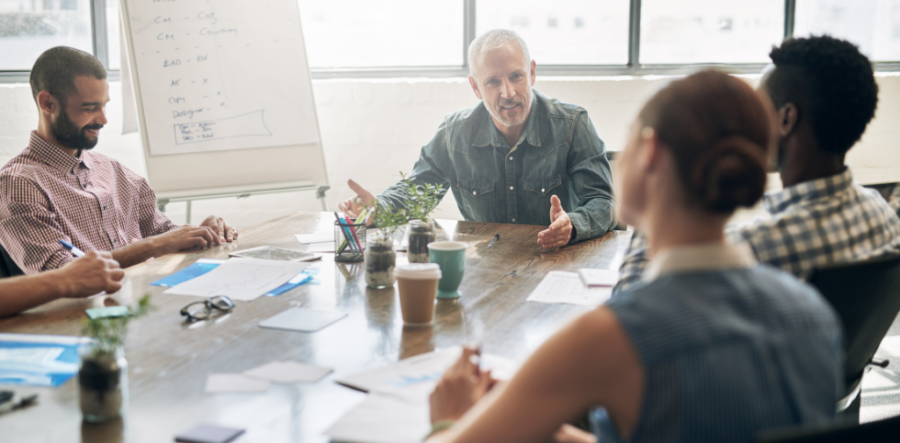Agile provides a framework for adapting to change as it happens and working with the project sponsor to deliver what’s most needed by learners. In a rapidly changing environment, the Agile mindset helps us harness change for good (instead of resisting it), and Agile techniques offer solutions for making constant change a practical reality. Rapid iterative cycles of design and evaluation allow us to test our solutions before full implementation, opening the doors to constructive change along the way. LLAMA is an Agile practice that is designed around the learning design & development context that takes into consideration the aspects of our work that are different from software development.
Just as it is with most fantastic ideas, the proof is in the implementation. Agile and LLAMA are as much about mindset and leadership as it is about techniques and meeting rhythms. I find that L&D teams that are successful in implementing Agile methods into their work have taken a well-rounded approach to implementation that includes a number of facets.
They know what they’re getting into. Maybe it goes without saying, but leaders who are successful in implementing Agile methods into their work know what they’re getting into. Perhaps they have read the book, attended a workshop, or have built relationships with people who have done it before.
They learn together as a team. Of course, we all know that the cobbler’s children have no shoes – in L&D, we’re not often as rigorous about building our own skills as we are about building the skills of others. However, this is one area where a focused learning effort can pay off. When the team learns together, the team can adapt and implement new approaches, transfer techniques to what they’ve previously known and worked with in the past, and have a foundation for support as they implement new skills.
They take a proactive approach to change management. Just turning on the “Agile switch” doesn’t really work. Leaders will need to plan for a certain amount of risk and uncertainty, a burn-in phase that may feel less productive than usual, and mistakes and frustrations along the way. Following a change management plan both internally (with the team) and externally (with stakeholders and maybe even learners) helps get everyone aligned.
Stakeholder management, stakeholder management, stakeholder management. These new ways of working with Agile may not all be visible to your stakeholders, but the ones that are may be quite a departure from the ways in which they are used to working with you. This change requires upfront communication and frequent re-communication as you involve stakeholders more regularly throughout the process, release and test iteratively, and even push back on scope changes with a better sense of the time and impact that they require. Many leaders find that the Agile methods give them a structure to support the hunches they’ve had all along – and that they then have new ways to work with stakeholders.
They bring the right tools for the job. It’s all about the tools! Well, no, it really isn’t all about the tools, but the tools are foundational. In my experience, some degree of project management software beyond Microsoft Excel and PowerPoint is going to be required in order to implement Agile in medium and larger-sized teams. Many of the Agile project management software tools on the market are designed around a software development context and are, therefore, a bit heavy-handed for most learning design projects. There’s a happy medium here that may require some experimentation on your part.
They know that “tools” means more than software. It’s not just about the project management software but rather the templates and processes that you build to support the change. One of the key things that we have done for our own Agile practices is to build in the practices that we want to make sure our teams do right into the weekly project planning template. They literally have to stumble over things like our Project Health Check and task estimating, making it much more likely that these things actually happen even when no one is looking. We’ve also created templates for each stage of the project that supports designers and developers in taking our desired approach to their work. The template covers 80% of the routine tasks & considerations, giving the team time to focus on the uniqueness of each project.
They evaluate their implementation. Leaders that are successful in this have defined what success looks like and even have metrics that measure it. They routinely look at these metrics, share them with their own stakeholders, and make adjustments as they go. They even have retrospectives on the entire team’s effort and implementation.
They take an agile approach to their agile implementation. About once a year, our team does what we refer to as a LLAMA-RAMA, which stands for LLAMA Review And Manage Altogether. (We love our acronyms!) The LLAMA-RAMA is a cross-functional grassroots effort that has brought so much richness and depth to our Agile practices.
They take care to build their own leadership skills. Agile implementation is not only transformational for the team members but also for the leader. It involves building and cultivating an environment of psychological safety every single day. It involves assessing and managing your own comfort level with risk. It involves a great deal degree of communication and interface with your counterparts within the business. And it takes a lot of coaching and support from individual team members as they adapt to the change. We’ve even created a LLAMA leaders learning experience to support this growth and connection with others doing the same work.
More and more, Agile methods in L&D are becoming essential for success. But it’s not magic: Agile implementation on the team takes care and thoughtfulness along the way. Taking an Agile approach to your Agile implementation, and taking these 9 key considerations into account, helps leaders build the team and the environment for success.
















